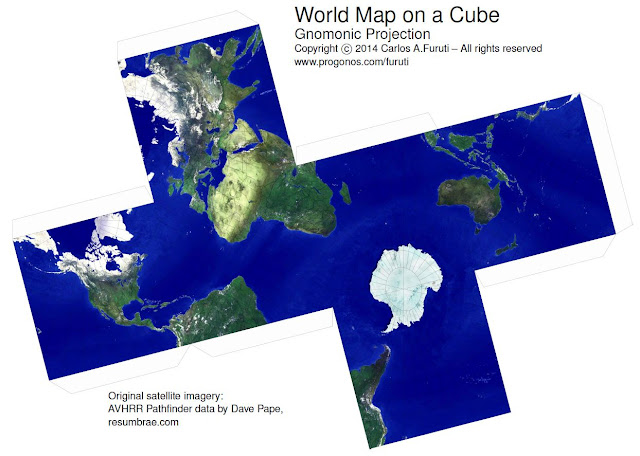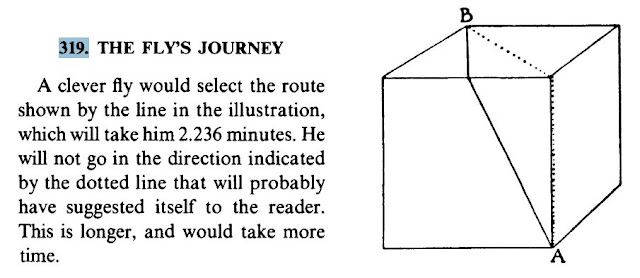The squaring of the circle, together with
the problem of angle trisection and
that of cube duplication, is a
classical problem in Greek mathematics, whose purpose is to construct a square
that has the same area as a given circle, with exclusive use of straightedge and
compass.
In 1882, Ferdinand Lindemann, of the University
of Munich, showed that pi is transcendent, thus forever drawing a line on the
problem of squaring the circle; from the proof provided by Lindemann, it turns
out that it is impossible to construct, only with straightedge and compass, a square
of area equal to that of a given circle, a problem that has tormented entire
generations of mathematicians since before Euclid.
Lindemann showed that pi is not an algebraic
number.
Any geometry
problem that can be solved only with the ruler and the compass, when placed
under its equivalent algebraic form, leads to one or more algebraic equations
with integer rational coefficients that can be solved by successive extractions
of square roots. Since π does not satisfy any of these equations, we cannot
arrive at the quadrature of the circle with the instruments in question.
Note: with row and compass it is obviously possible to
"construct" the positive integers as whole distances from the given
origin. Every rational number is constructible, and this thanks to Thales'
beautiful theorem on similar triangles; furthermore it can be shown that the
square root of any constructible number is itself constructible.
A
fractal is a geometric object that
is repeated in its form in the same way on different scales, and by enlarging
any part of it you get a figure similar to the original.
In the previous
post we saw the Sierpinski carpet, a
fractal obtained from a square, described by the Polish mathematician Wacław Sierpiński in 1916. At each step
the squares that make up the figure are divided into 9 smaller squares and the
central square is removed. In this way, for each step the area is reduced by
8/9, so the fractal dimension of the carpet is log 8 / log 3, equal to 1.892789 ...
Now let's see another object that "might"
look similar to the previous one.
The sieve of Wallis is
thus constructed:
it starts with a 2 x 2 square and is divided into 4
squares;
divide each new sub-panel by 9 and remove the central
square (8/9);
each new sub-panel is divided by 25 and the central
square (24/25) is removed;
each new sub-panel is divided by 49 and the central
square (48/49) is removed;
each new sub-panel is divided by 81 and the central
square (80/81) is removed
and so on.
Here's how it looks after a few steps:
I said "could" because the Wallis sieve is a fractal-like, at every step the rule changes and therefore
self-similarity is not maintained. However, while in the case of the carpet the
area (Lebesgue measure) is zero, for the sieve the area has a well-known value.
The initial value is by
definition 4, then in the order it is multiplied by 8/9, 24/25, 48/49, 80/81,
..., (n2 - 1) / n2
This is the famous Wallis product:
which can also be rewritten in this way:
The wonder lies in the
fact that the areas of the Wallis sieve
and the Circle are the same.
Let's see 2 more views:
in the first figure we start with only 1 square and
relate to the relative inscribed circle, while the same object is then
decomposed and recomposed to better highlight the equivalence of circle and sieve.
With straightedge and compass you can therefore build a "square"
equivalent to the circle, just have patience and the necessary time ... if it
is not exactly a square, it somehow looks like it.
Another way could be
the following: take a square of side 2, remove a concentric square of area 4/3,
add one of area 4/5 and continue like this to infinity ... you will have thus
obtained the series of Gregory – Leibniz
multiplied by 4, that is pi.
 |
| Size of yellow area is equal to pi |
Let us ask ourselves
this question:
is there a Menger
sponge equivalent to the Wallis sieve?
It starts from a cube
of side 1 and divides the side into 3 parts (27 cubes as for the Rubik's cube),
the central cube and the 6 central cubes are removed with each face (so 20
cubes remain), in the next step divide the side of each new cube by 5 removing
the central cube and the cubes that extend from the center, then repeat the
same procedure with 7, 9, 11 and the subsequent odd numbers.
Wonder of wonders,
8 of these cubes have the same volume as
a sphere of unit radius
or equivalent
cube of side 1 has the same volume as sphere of
unitary diameter











































